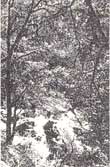Inverse proportion: species quantum and carbon dioxide
 WHAT could the consequences be of the rapid extinction of plant and animal species, as witnessed this century? A team of researchers at the Centre for Population Biology, of the UK's Imperial College at Silwood Park says that it has demonstrated experimentally, for the first time, that the loss of biodiversity not only leads to a loss of genetic resources but also lowers plant productivity of an ecosystem. A decrease in the number of living species may also impair such functions of an ecosystem as the mopping up of global warming-causing carbon dioxide produced by human activities (Nature, Vol 368, No 6473).
WHAT could the consequences be of the rapid extinction of plant and animal species, as witnessed this century? A team of researchers at the Centre for Population Biology, of the UK's Imperial College at Silwood Park says that it has demonstrated experimentally, for the first time, that the loss of biodiversity not only leads to a loss of genetic resources but also lowers plant productivity of an ecosystem. A decrease in the number of living species may also impair such functions of an ecosystem as the mopping up of global warming-causing carbon dioxide produced by human activities (Nature, Vol 368, No 6473).
The team carried out a series of experiments under strictly controlled conditions. Shahid Naeem and his colleagues used 14 different models of ecosystems, each no larger than 1 square metre, containing plants and animals. The plants used were mainly herbs while the animals used were herbivores (such as snails and aphids), carnivores (parasitic wasps) and decomposers (earthworms). These were then randomly placed in separate chambers of the Ecotron -- a system of chambers designed specifically for these experiments where environmental parameters such as air temperature, air flow, relative humidity, water, initial soil conditions and density of organisms can be controlled. These were the same for all chambers at the beginning of the experiment.
The scientists then manipulated the number of species to create ecosystems of low (9 species), intermediate (15 species) and high (31 species) diversity. The manipulations were done in such a way that the microcosms with fewer species represented a loss of species from more diverse ecosystems, much the same way as is occurring on the planet presently.
The research team found that when the number of species was increased by 2-3 times, the plant productivity increased in the same proportion. They also found that ecosystems with higher diversity consumed more carbon dioxide than those containing fewer species.
